Inside OZO, Nokia's Audacious Plan For Its VR Future
Virtual reality may be new for Nokia, but reinvention isn't. The story of Nokia's various incarnations is one that has been told many times over the past decade. Sure enough, the company best known today for its cellphone business was once a major producer of paper products, of rubber, and of cables.
Embracing change isn't the same thing as doing well at it, though. Nokia's decision to go all-in with Windows Phone was a bold one – some still argue just plain foolish – and it ended with the company selling off the division that most people associated it with.
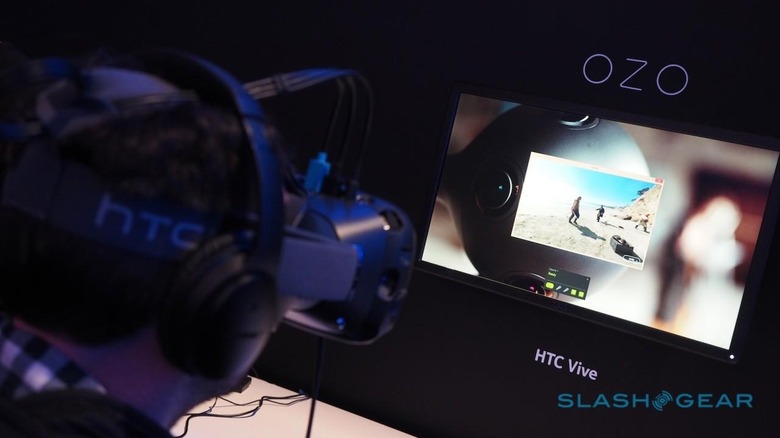
It also raised the question of just what would be the next chapter in Nokia's story. Even with the company's track record in cameras, culminating in PureView technology, however, a virtual reality rig targeting professional videographers was still unexpected.
Nokia Technologies chief Ramzi Haidamus is counting on that surprise – and the momentum VR has in general at the moment, with affordable devices like Samsung's GearVR and upcoming headsets such as Oculus' Rift and HTC's VIVE – to make its $60,000 OZO camera a hit in a world where digital experiences are about to become exponentially more immersive.
"What's the Citizen Kane of VR?"
"What's the Citizen Kane of VR?" Haidamus asked. "What would Omaha Beach have been like if the first reporters had planted OZOs there?"
At a time when you can capture, edit, and share 4K video in an instant on a smartphone, I hadn't realized quite how limited videographers filming virtual reality content were in comparison.
Until now, no other VR camera has offered real-time review of 360-degree content; there are no "dailies" from which you can get a rough idea of how the day's filming went. Instead, the raw footage had to be sent away, processed – which could take weeks or even months – and only then would the director and producer see whether they'd aced the shot or would need to reshoot it.
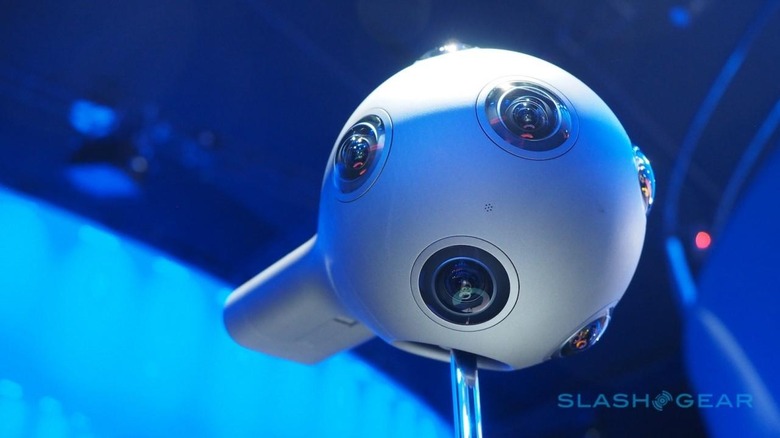
OZO is counting on immediacy to distinguish it in an age of jury-rigged 360-degree cameras and lengthy processing. The bundled OZO Remote software, for instance, can show a view from each of the eight cameras – or from one in particular – in real-time, or stitch the footage together for either a rectilinear pannable display or feed straight into a connected head-mounted display complete with audio from the eight microphones.
Nokia calls the system OZO Dynamic Rendering, and it works by selectively picking the pixels the HMD wearer is looking at and only rendering that part of the image. The results aren't perfect – the joins between the different camera feeds show some blurring still – but it's certainly enough to review whether you have the camera's settings and the staging right.
"It's a single cable and a single data stream," Haidamus boasts, "you can take this camera and put it anywhere you want. To discover your favorite band. To be court-side by your favorite team. To the Supreme Court when the gay marriage decision comes out, and see the emotion and the elation."
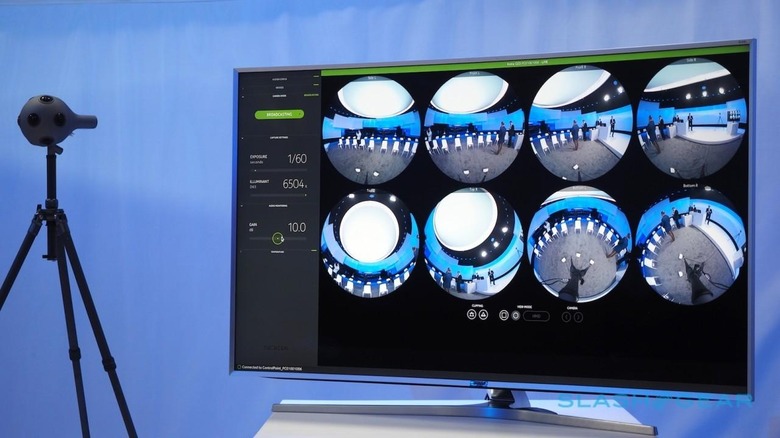
None of that would be possible if OZO had been a huge, unwieldy rig, as most of the 360-degree cameras in use today are. Haidamus compares the 9.3 pound aluminum orb to the size of a human head, and points out that its scale means it can sit in among people, rather than force them to accommodate it.
"Nokia's known for connecting people, today to new experiences"
"Our design team did an amazing job, they took all that Nokia's known for and put it in this amazing package whose goal is to effectively disappear ... the goal is to make it wireless, compact. Put it on a drone and fly it away. Put it at the edge of a glacier, where people don't want to go, or can't go. Put it in a refugee camp ,where you want to show your kids what it's like on the other side of the world. Nokia's known for connecting people, and today it's connecting people to new experiences."
Preorders of OZO began yesterday, with deliveries of the camera expected to begin in Q1 2016. I sat down with Paul Melin, vice president of digital media at Nokia, to talk about how the flight of fancy of a handful of engineers back in November 2013 became the first product from Nokia Technologies.
"It's not an accident but it's also not the result of some wise, longtime strategic planning that would have resulted in virtual reality being the sweet spot," Melin explained. "It's a combination of genuine bottom-up initiative. More than two years ago we had just a couple of engineers who had an idea about a camera product, they pitched their idea to their managers and got going, and refined their idea several times, and what they got was OZO."
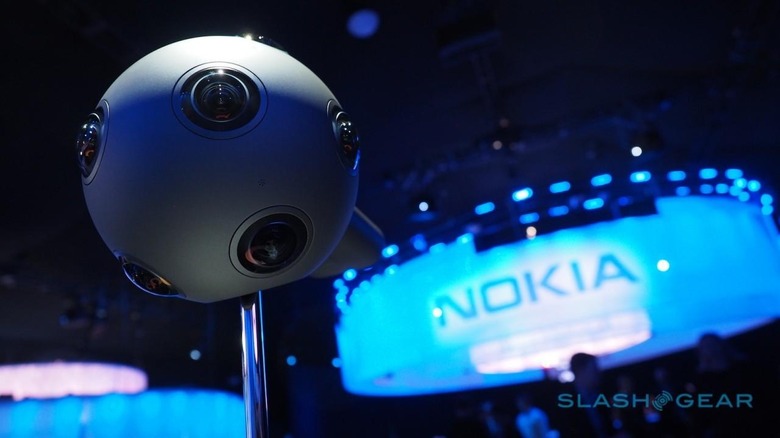
SlashGear: This is not a product that anybody would associate with Nokia.
Paul Melin: "We did have a culture of trialling and researching new kinds of user experiences, new kinds of devices, and the technologies that enabled OZO were very much in the core of our competencies at Nokia Research"
SlashGear: It might not be a smartphone, and be a shape that's unlike anything you've done before, but it definitely has the feel of a Nokia. Was that intentional, or is it just that any camera of this sort with these specifications is going to look like this?
Paul Melin: "We are very proud of our design team, and we did retain – when we divested the mobile handset business – a very good part of our design competencies just to support new business ventures ... It does have Nokia heritage in the design itself.
There are a lot of functional decisions that drive product choices, things like optimizing performance for the size and power consumption, and to some extent of course for also cost, but we did not use the cost as a primary driver because this is very much a professional product based on technologies that are sensible to integrate into a professional product today."
SlashGear: At $60,000 it's clearly very much out of the reach of regular consumers. Will OZO, or some offshoot of it, ever be suitable for the mass market?
Paul Melin: "We certainly see a path where as VR content becomes adopted by the mass market, that people get more and more familiar with the medium, absolutely people will want to record their memories, and share their memories, and communicate in a more immersive fashion. So, we do see a pathway there.
But, at this point in time, we saw that in order to have uncompromized quality for the VR experience is very important, and the initial product that makes sense to commercialize is very much for the commercial market. So it's a question of timing."
SlashGear: How has that commercial market reacted so far?
Paul Melin: "We have been constantly, positively surprised by the enthusiasm we have received from the community. We engaged with professional producers and directors very early in the R&D process, because this is a new market for us.
We needed to get advice from people who operate in this market and who can guide us as to what is relevant to them."
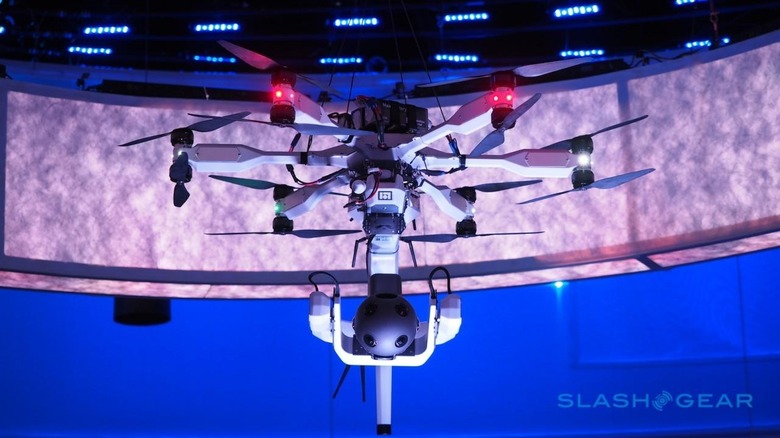
SlashGear: How many OZO units are out in the wild, are people already capturing video with them?
Paul Melin: "We have engaged with a number of directors and producers who have been producing their content. A lot of that content is still in post-production and not published. And as we make OZO commercially available to the public we expect to see much more."
SlashGear: You've clearly set out to own part of the virtual reality content process, but you're demonstrating video filmed with OZO on a number of headsets. Do you see Nokia ever releasing a viewer for OZO movies, or a store for distributing content?"We have no plans to enter the HMD business"
Paul Melin: "We have no plans to enter the head mounted display business. We want to partner with the entire ecosystem and be compatible with all the platforms. Customers of OZO can produce their content and distribute their content on any platform they wish."
SlashGear: There's still a lot of uncertainty about what sort of future virtual reality has. Will it be HD, which was a great success, or will it be 3D, which really wasn't? What do you see as some of the challenges VR faces, and how do you think OZO will help overcome them?
Paul Melin: "For VR, clearly a lot of the earliest experiences will be focused on gaming and computer generated graphics. With OZO, we want to enable the reality part of virtual reality: be those documentaries, sport, news, whatever creative minds come up with. We think that getting this high quality content for consumers to experience is key for adoption.
We have focused on the design of OZO an the associated software on ease of production, efficiency, making it significantly simpler for content producers to experiment with the camera and see what they're shooting live, thereafter iterate and better these experiences. We will also be making available technology for superior playback experiences, but we won't be making head-mounted displays or aggregating content or experiences."
SlashGear: You've obviously taken onboard a lot of feedback from content producers. What sort of guidance around OZO and virtual reality content in general are you giving to those creating and distributing it?
Paul Melin: "In selling the OZO, we are selling it as any camera manufacturer is selling a camera, so basically customers are free to experiment and produce their own content, we don't interfere with that or impose limitations on the quality of the content or the distribution.
Of course, when we make our own technologies available there may be licensing issues as further development goes on, but as a customer you can think of OZO as a professional camera product with the customary type of usage as you have in existing products."
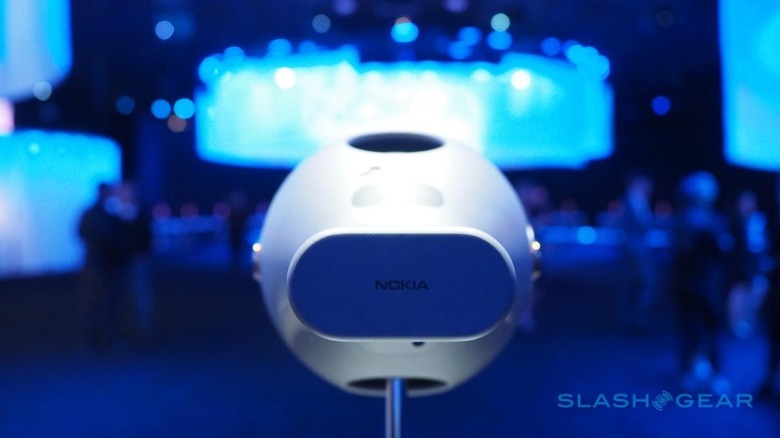
SlashGear: Is OZO an toe-dip into VR or do you see it as the first product in a family of devices?
Paul Melin: "We clearly see this as a new category and OZO is our first product. We are entering a business and a category, and not doing a one-off test product.
We see the digital media business and immersive experiences – which includes virtual reality but is not limited to virtual reality – as a significant investment and growth area for us."
SlashGear: You made a distinction there between immersive experiences in general and VR specifically – what other immersive experiences is Nokia looking at?
Paul Melin: "If you think about it, we have grown up with the idea that an image or video is a rectangle. Bigger screen seems better and higher resolution means higher quality and so forth: these are very linear concepts.
"We have grown up with the idea that a video is a rectangle"
But we think that the images are actually becoming spherical, and not only a flat bubble around you but spherical with depth that you can experience in full 3D as if you were there. Audio is a critical part of that experience, so you get spatial audio and every sound is in the correct place; you actually feel the presence.
Once people become accustomed to this more immersive experience, why wouldn't you expect the same quality of immersive spatial audio from your home videos, and content that can be downscaled from the full 3D experience, for example panoramic monoscopic 360 video as you have seen some of the leaders in social media enable lately?
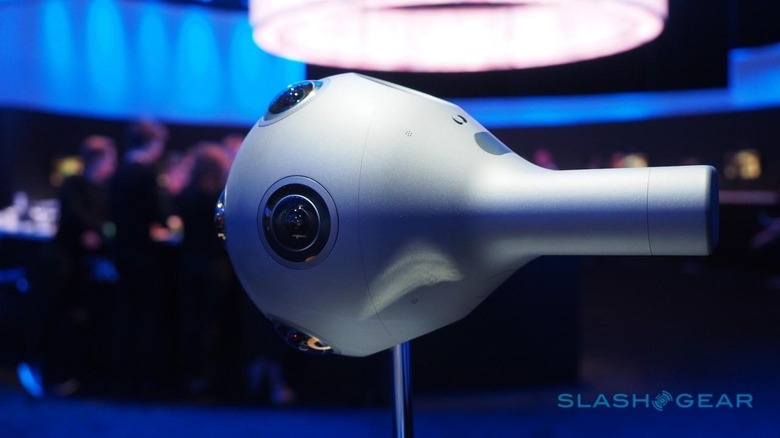
We think that 360 degree vides and virtual reality will ultimately become part of the fabric of the internet, and it will become a pervasive way of experiencing rich content. So, especially the audio technologies and the enablers that we have been developing in Nokia for more than fifteen years in video coding and video streaming and data connectivity – because this takes a lot of data – there are a lot of applications.
"What VR we see today is the equivalent of the brick phones of the 80s"
It's also important to recognize that the VR market isn't limited to the console-based, high-end VR systems, but we see mobile phones: everybody who has a mobile phone is a potential consumer of virtual reality content. What we are seeing today are just the equivalent of the brick phones of the late 80s or early 90s, and you can easily imagine a future ten years from now, fifteen years from now, where all of us have a simple, lightweight accessory with us that enables us to transport to other places, other experiences."
SlashGear: Right now, using a VR headset is a relatively solitary thing, whereas traditionally watching a movie or even gaming has been a more social experience – everybody gathered together and looking at the same screen. Do you think VR will ever attain the same social element as that?
Paul Melin: "We think that there will be a lot of experimentation. We don't claim to have a singular vision of the right way of using this medium. A lot of companies are exploring the social aspects of being social in a virtual environment. How people will end up being social with the people who are in the same physical space, we will see.
But I personally believe that having this rich ability to experience presence in a different place will be part of the everyday life experience. It doesn't necessarily mean that you would have five hour VR sessions where you immerse yourself into a world, but as the user experience becomes easier and simpler to switch on, switch off, you can see these kind of multiscreen experiences where, for example, if you're watching a sports event on television if there's a particularly great event you might want to watch the replay in VR.
This multiscreen experiences are definitely going to be part of it. We think that VR is just going to be one part of a spectrum of immersive experiences."
SlashGear: The sort of experience you're talking about, and the sort of quality OZO is capable of capturing at, is hugely bandwidth-intensive. Is the market ready for that?
Paul Melin: ""We already see that 4K video channels are being adopted by a lot of consumers. I don't have the exact numbers, but 4K video channels are very much becoming a relevant commercial offering in the United States, for example. What we are demonstrating today is live-streaming VR, over WiFi, into headsets.
So we are certainly within those parameters that enable deployment, at least for people who have a solid internet connection already today."
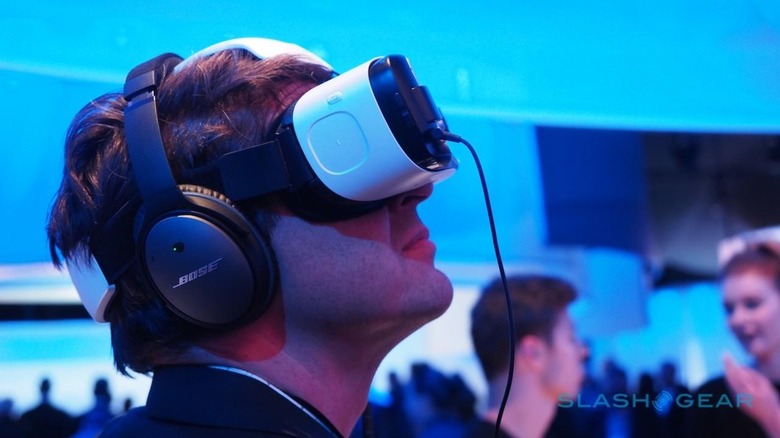
The mood among the cinematographers, producers, and VR enthusiasts Nokia had invited to OZO's launch was perhaps best described as curious and tentatively enthusiastic. While the camera's price tag might seem outlandish, little in the brave new world of virtual reality content is affordable – even if, as was pointed out to me, you'd probably need a pair of them on-set.
Nokia expects camera rental services to make OZO more accessible, playing up the feedback from early testers that shooting with the camera has an easier learning curve than other systems.
NOW READ: Nokia OZO hands-on
OZO cameras have been in the wild for six weeks now, mostly producing 2-5 minute videos with the hardware on-side for just a day with each production company. Certainly post-production can take 3-5 weeks, depending on content, but the ability to see in real-time what changes in exposure, staging, and other factors mean the initial hurdles to familiarity are overcome far more swiftly.
It's been enough to convince those lucky enough to get early access to OZO, including Dylan Mathis, International Space Station Program Communications Manager, who took the VR camera to film NASA astronauts undergoing underwater zero-gravity training.
"OZO is incredibly exciting," he said. "It takes the accessibility of YouTube and the grandeur of IMAX, and puts it into one device."
[gallerybanner p="416419"]
